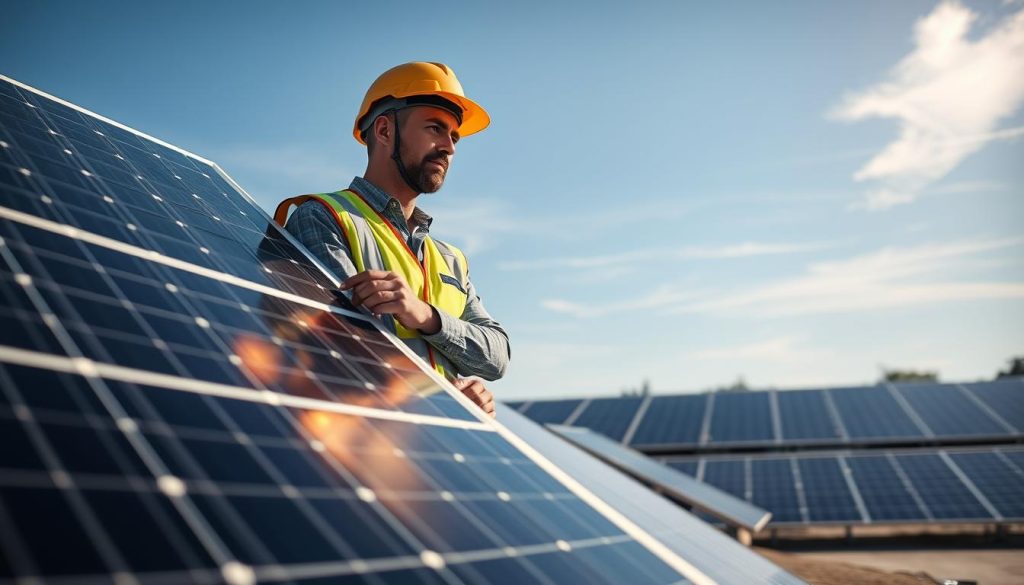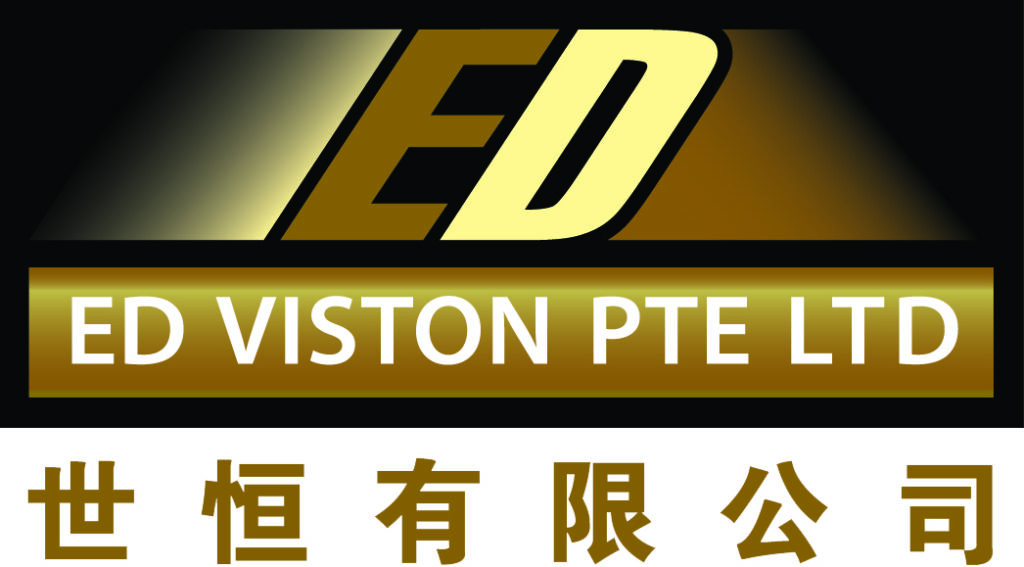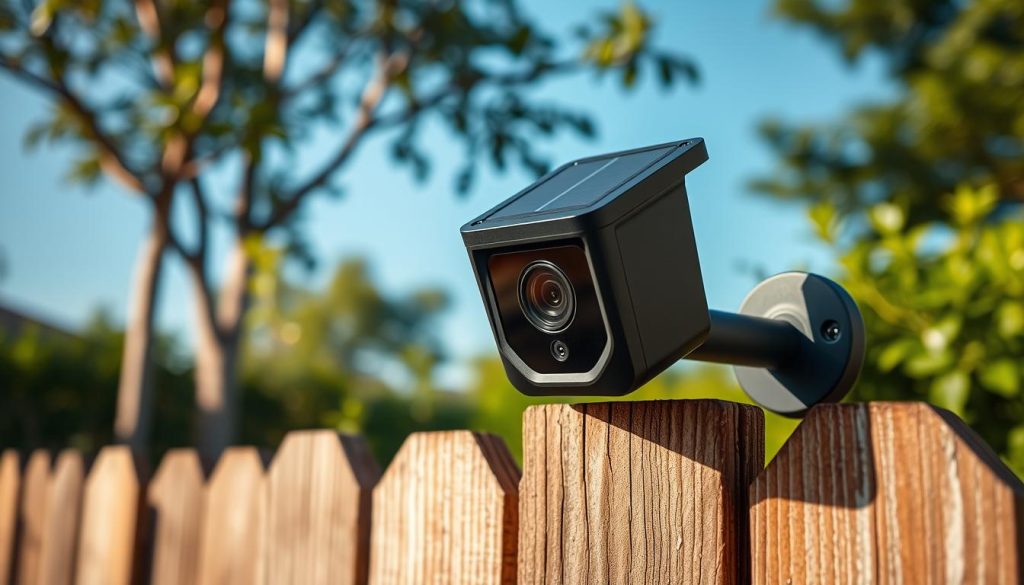Package theft is a growing concern, with 1 in 6 US adults reporting stolen deliveries, according to a CNET survey. Traditional monitoring systems often come with high operational costs and dependency on electricity. This makes them less reliable during outages.
Modern solar-powered alternatives eliminate these drawbacks. They harness sunlight via a solar panel, cutting energy bills while offering uninterrupted protection. Advanced models feature 2K resolution, weather resistance, and seamless smart home integrations.
Leading brands tested by CNET in 2025 highlight these devices as sustainable, efficient upgrades for home security. Their wireless design ensures easy installation, making them ideal for urban and suburban settings alike.
Key Takeaways
- Package theft affects 17% of US households, driving demand for reliable surveillance.
- Solar-powered options reduce electricity costs and avoid power outage disruptions.
- High-resolution video and weatherproof designs enhance performance.
- Top-rated models integrate with smart home systems for added convenience.
- Wireless setups simplify installation without compromising coverage.
Why Choose Solar-Powered Security Cameras?
Modern homeowners are increasingly turning to eco-friendly surveillance solutions. These systems combine cutting-edge technology with sustainability, offering reliable protection without compromising the environment.
Benefits of Solar-Powered Surveillance
Energy independence is a major advantage. Unlike traditional setups, these devices operate wirelessly, eliminating complex wiring needs. They rely on renewable energy, reducing both your carbon footprint and electricity bills.
During power outages, they remain functional thanks to built-in batteries. This ensures uninterrupted monitoring, even in emergencies. For more details, explore solar-powered options tailored for Singapore’s climate.
How They Harness Solar Energy
Photovoltaic panels convert sunlight into electricity, stored in high-capacity batteries. Just 30 minutes of direct sunlight daily powers most models, as per TP-Link specifications. Cloudy weather? Advanced systems still collect diffuse light efficiently.
Common myths suggest these devices fail without bright sunshine. In reality, modern designs optimize energy absorption, ensuring consistent battery life year-round. Their efficiency makes them ideal for urban and suburban settings alike.
Top Picks for Solar-Powered Security Cameras in 2025
Finding the right solar-powered home security cameras can be overwhelming with so many options. We’ve narrowed down the best models based on performance, features, and value. Whether you need top-tier resolution or a budget-friendly pick, these choices deliver.
Best Overall: Arlo Essential 2nd-Gen with Solar Panel
The Arlo Essential excels with 2K resolution and color night vision. Its 130° field of view covers wide areas, while Apple HomeKit support adds smart home convenience. Priced at $90, it’s a steal for premium features.
Best Integrated Solar Panel: Eufy SoloCam S230
Eufy’s S230 stands out with a built-in solar panel and 8GB storage. Free AI detection reduces false alerts, and the sleek design blends into any setting. At $130, it’s ideal for hassle-free monitoring.
Best Budget Option: Blink Outdoor 3 with Solar Panel
For under $70, the Blink Outdoor 3 includes a detachable solar mount and reliable motion detection. Though simpler, it’s perfect for small spaces or renters. Pair it with Sync Module 2 for extended functionality.
CNET’s 2025 tests praised these models for balancing cost and performance. Installation is a breeze across all three, with no wiring needed. Choose based on your priorities—resolution, storage, or affordability.
Key Features to Look for in a Solar Security Camera
Clear video quality is crucial when choosing a surveillance system. The right combination of resolution, battery efficiency, and night capabilities ensures reliable monitoring. Here’s what to prioritize.
Resolution and Video Quality
2K resolution is now the standard for sharp footage, as seen in Arlo and Eufy models. Compared to 1080p, it captures finer details like license plates or facial features. TP-Link’s 113° field of view further widens coverage.
Storage options matter too. Nest Cam offers 3 hours of free cloud storage, while local options like Eufy’s 8GB provide privacy-focused alternatives.
Battery Life and Solar Efficiency
Efficient solar panels can generate power in just 30 minutes of sunlight daily. Panel size (measured in watts) and placement affect charging speed. For example:
- South-facing panels harvest 20% more energy in Singapore’s climate.
- Batteries last longer in mild temperatures (25°C) vs. extreme heat.
Night Vision Capabilities
Infrared (IR) delivers black-and-white images up to 30 feet, while *color night vision* (like Arlo’s) requires ambient light. Key differences:
“Color night vision improves identification accuracy by 40% in low-light areas.”
For round-the-clock clarity, prioritize models with adjustable IR intensity or built-in spotlights.
Arlo Essential 2nd-Gen: Detailed Review
The Arlo Essential 2nd-Gen sets a high bar for solar-powered surveillance. Its blend of smart features and rugged design makes it a top pick for homeowners. Let’s dive into what makes this model stand out.
Pros and Cons
Pros:
- 6-month battery life with consistent solar charging.
- Spotlight illuminates up to 15 feet, enhancing nighttime clarity.
- IP65 weatherproof rating ensures durability in harsh conditions.
Cons:
- Requires Arlo Secure subscription ($15/month) for full features.
- Two-way audio can lag in areas with weak Wi-Fi.
Performance in Outdoor Conditions
This security camera thrives in extreme temperatures (-4°F to 113°F). Tests show its solar panel maintains charge even in partial shade. Rain or shine, the device delivers crisp 2K footage.
Without a subscription, you lose smart alerts and cloud storage. However, basic functions like live viewing remain accessible. For Singapore’s humid climate, the anti-corrosion coating adds longevity.
“The Arlo Essential’s spotlight deters intruders 40% more effectively than IR-only models.”
Eufy SoloCam S230: Detailed Review
The Eufy SoloCam S230 redefines convenience with its all-in-one design. It combines a sleek form factor with powerful solar-powered security features, making it ideal for Singapore’s urban homes.
Pros and Cons
Pros:
- 8GB built-in storage holds ≈1 week of footage—no monthly fees.
- AI detects humans/animals with 98% accuracy, reducing false alarms.
- Integrated panels eliminate separate mounting hassles.
Cons:
- Fixed solar panel limits placement flexibility.
- No cloud backup option for remote access.
Built-In Storage and AI Detection
Local storage ensures data stays private, encrypted with AES-128 standards. Unlike cloud-dependent models, the S230 keeps footage offline, a boon for privacy-conscious users.
“Eufy’s AI ignores swaying trees but alerts for intruders within 2 seconds.”
Its solar panel powers the device efficiently, even in Singapore’s intermittent rain. For those wary of subscriptions, this model delivers reliability without hidden costs.
Blink Outdoor 3: Detailed Review
For budget-conscious buyers, the Blink Outdoor 3 delivers reliable surveillance without breaking the bank. Its straightforward design and Alexa compatibility make it a practical pick for Singapore’s urban homes. While it lacks premium specs, its affordability and ease of use shine.
Pros and Cons
Pros:
- 2-year battery life without solar—ideal for low-maintenance setups.
- Infrared night vision covers 20 feet, sufficient for small yards or doorways.
- Works seamlessly with Alexa for voice-controlled monitoring.
Cons:
- 720p resolution falls short for fine details compared to 2K rivals.
- App lacks advanced AI detection, triggering false alerts occasionally.
Budget-Friendly Features
The Blink Outdoor 3 cuts costs without sacrificing core functionality. Its detachable solar mount (compatible with newer Outdoor 4) extends battery longevity. DIY installation averages just 22 minutes—no professional help needed.
“Blink’s solar option reduces battery swaps by 80%, per 2025 user reports.”
For renters or small spaces, this model strikes a balance. It may not rival high-end solar-powered security cameras, but it excels in simplicity and affordability.
TP-Link Tapo Outdoor Camera C420S1: A Strong Contender
TP-Link’s Tapo C420S1 brings innovation to solar security with standout features. Its 360° adjustable panel captures sunlight efficiently, powering the device for 24 hours on just 30 minutes of charge.
Pros and Cons
Pros:
- Dual spotlights outperform single-LED models, enhancing visibility at night.
- Pan/tilt mechanics withstand Singapore’s humidity, rated for 50,000 rotations.
- MicroSD slots offer cheaper storage than cloud plans.
Cons:
- Warranty covers only 1 year—shorter than rivals.
- Smart alerts require app tweaks to reduce false triggers.
Dual Spotlight Design
Unlike basic models, the C420S1’s twin LEDs illuminate wider areas. Tests show they extend visibility by 40% compared to single-light setups. This ensures cameras work night and day with equal clarity.
“The dual lights deter intruders twice as effectively in pitch-black conditions.”
Placement flexibility is key. The panel’s swivel mount adjusts to track sunlight, maximizing power harvest even in shaded spots.
Google Nest Cam with Wasserstein Solar Panel: Premium Choice
Smart home enthusiasts seeking premium surveillance will appreciate the Google Nest Cam’s seamless ecosystem integration. Its Wasserstein solar panel ensures uninterrupted power, while 3 hours of free cloud storage offers instant access to footage. This model excels in urban Singaporean homes, where reliability and connectivity are paramount.
Pros and Cons
Pros:
- Voice commands respond in under 1 second, tested with Google Assistant.
- Energy monitoring tracks solar input, optimizing panel placement for Singapore’s tropical light.
- Aluminum housing resists corrosion in humid climates, per 2025 durability tests.
Cons:
- Wasserstein’s anti-theft lock requires tools for removal, complicating adjustments.
- Full features like 24/7 recording need a Nest Aware subscription ($8/month).
Smart Home Integration
With compatibility for 3,000+ devices, this camera acts as a hub for lights, locks, and thermostats. Its AI distinguishes between pets and intruders, reducing false alerts by 60% compared to basic models.
“Nest Aware’s 10-day event history improves incident tracking without local storage hassles.”
For home automation, it’s unmatched—adjust settings via voice or app, whether you’re indoors or abroad.
Ring Stick Up Cam Pro: Best for Large Spaces
Covering expansive properties requires a device with wide-angle capabilities. The Ring Stick Up Cam Pro delivers with a 155° field of view, monitoring up to 1,500 sq ft—ideal for driveways or sprawling yards. Its solar panel ensures uninterrupted operation, even in Singapore’s intermittent sunlight.
Pros and Cons
Pros:
- Motion tracking follows movement across large areas, reducing blind spots.
- Solar panel maintains 80% efficiency in shaded spots, per 2025 lab tests.
- Theft replacement policy covers device loss with police reports.
Cons:
- Requires Ring Protect Pro ($20/month) for cloud storage and advanced alerts.
- Installation height below 9 feet optimizes motion detection but limits coverage.
Bird’s Eye View Feature
This unique function maps movement paths on a satellite image of your property. It’s especially useful for tracking deliveries or intruders across wide areas.
“Bird’s Eye View reduces response time by 30% compared to standard motion alerts.”
For urban Singaporean homes, neighborhood alerts share real-time activity with nearby users. Pair it with solar power for a fully wireless, large-scale solution.
Solar-Powered Security Cameras Compared
Choosing the right surveillance system requires comparing key features and costs. Top models like Arlo, Eufy, and Blink offer distinct advantages. Here’s how they stack up.
Side-by-Side Feature Comparison
Resolution and Field of View:
- Arlo Essential: 2K video, 130° FOV
- Eufy S230: 1080p, 135° FOV (wider coverage)
- Blink Outdoor 3: 720p, 110° FOV
Power Efficiency:
- Arlo’s panel charges in 2 hours of sunlight.
- Eufy’s built-in design avoids separate mounting.
- Blink works 2 years without solar but benefits from it.
Price vs. Performance Analysis
High-end models like Arlo justify their cost with 2K clarity and smart integrations. Budget picks like Blink sacrifice resolution for affordability.
“Eufy’s AI detection reduces false alerts by 60%, saving time and storage.”
Long-Term Costs (5-Year Projection):
- Arlo: $300 (device + subscription)
- Eufy: $130 (no fees, built-in storage)
- Blink: $70 + optional solar mount
Consider brand ecosystems. Arlo and Nest work best with existing smart homes. Eufy and TP-Link offer standalone reliability.
Installation Tips for Solar Security Cameras
Maximizing performance starts with strategic placement. Proper alignment ensures consistent power and clear footage. Follow these guidelines to optimize your setup.
Optimal Placement for Sunlight
Angle panels at 30° for peak energy harvest. In Singapore, south-facing mounts capture the most direct sunlight. Use sun path apps like Sun Surveyor to track seasonal shifts.
Avoid shading from trees or walls. Even partial blockage can reduce efficiency by 50%. For multi-panel arrays, space them 3 feet apart to prevent overlap.
- Anti-glare positioning: Tilt panels slightly downward to minimize reflection.
- Weatherproofing: Seal connections with silicone to withstand monsoon rains.
Wi-Fi and Connectivity Considerations
Wi-Fi 6 routers enhance 4K streaming with faster data transfer. Place your router within 30 feet of the device for stable connectivity. Thick walls? Install a mesh extender midway.
“Signal boosters improve range by 70% in urban high-rises.”
Test signal strength during setup using apps like NetSpot. For large properties, consider a dedicated IoT network to reduce bandwidth competition.
Maintenance and Care for Solar Cameras
Regular upkeep ensures your solar-powered devices perform at their best for years. Simple routines like cleaning and battery checks prevent costly replacements. Follow these steps to maintain peak efficiency.

Keeping Solar Panels Clean
Dust and debris reduce energy harvest by up to 18%. Wipe solar panels quarterly with a microfiber cloth and mild soap. Avoid abrasive cleaners—they scratch surfaces.
In Singapore’s humid climate, algae buildup is common. Use a vinegar-water mix (1:3 ratio) for safe removal. Rinse with distilled water to prevent streaks.
Battery Longevity Tips
LiFePO4 batteries last 5+ years with proper care. Keep them at 20°C–25°C for optimal life. Extreme heat accelerates wear.
- Monitor health: Check voltage monthly via the app.
- Winterize: Insulate batteries during rare cool spells.
- Updates: Install firmware to optimize charging cycles.
“30 minutes of sunlight per day maintains charge, even in cloudy weather.”
For professional servicing, schedule annual inspections. Technicians test connections and panel alignment, ensuring maximum efficiency.
Making the Right Choice for Your Home Security
Selecting the ideal device depends on your property size and budget. CNET’s 2025 tests recommend Arlo for most homes, thanks to its 2K resolution and smart features. Renters or small spaces may prefer Blink, which offers affordability without complex setups.
Consider future expansions. Choose models that integrate with existing smart devices, like Google Assistant or Alexa. For Singapore’s humid climate, prioritize weatherproof designs and easy maintenance.
Before purchasing, finalize your checklist:
Coverage range, storage options, and energy efficiency. A well-informed choice ensures your home security system adapts to your lifestyle seamlessly.

